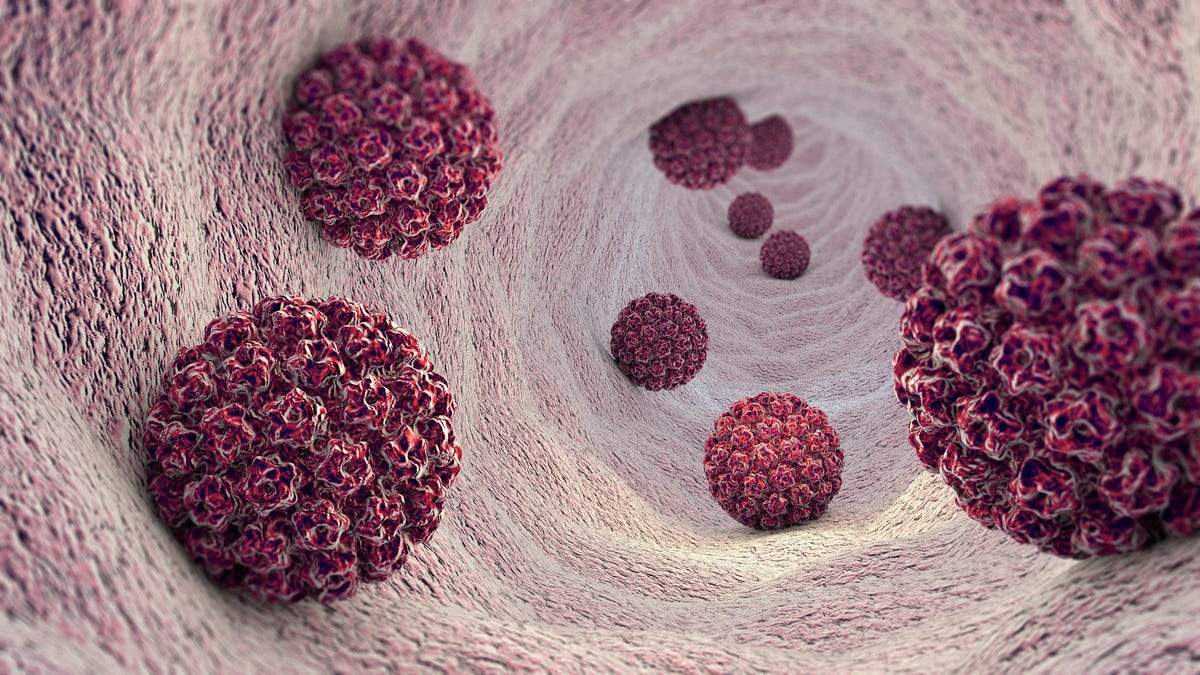
Plenty of men worldwide are carrying the human papillomavirus, or HPV, new research has found. The study estimates that about one in three men currently have at least one strain of genital HPV, while one in five have a strain known to increase the risk of certain cancers in both men and women. Many of the worst types of HPV are vaccine-preventable.
HPV is considered the most common sexually transmitted viral infection in the U.S. and the world, and just about every person will be infected by it at some point in their lives. Thankfully, most HPV infections are symptomless, and the body typically clears an infection on its own within a few years. But there are over 200 types of HPV out there and some types can cause unpleasant symptoms like genital warts. These warts aren’t dangerous and usually go away after a while, but are unseemly and sometimes painful. Other types of HPV cause no acute illness but raise the risk of several different cancers (one reason why is that these infections tend to linger much longer in the body).
Advertisement
HPV is best known for causing cervical cancer in women and is thought to account for the vast majority of these cancers. But high-risk HPV strains are also strongly linked to penile cancer in men as well as anal, throat, and mouth cancers in both men and women. While most people with high-risk HPV will not develop these cancers, most of these cancers are caused by HPV. About 60% of penile cancers are tied to high-risk HPV, for instance, along with 70% of throat cancers.
The focus on the link between cervical cancer and HPV has led to plenty of research on its prevalence among women. But according to the authors of this new study, published last month in The Lancet Global Health, much less attention has been paid to its prevalence in men. The authors, which included scientists from the World Health Organization as well as public health agencies in the U.S. and Spain, decided to review the evidence looking at this question.
Advertisement
Advertisement
They analyzed 65 studies from 35 countries conducted over the past 30 years on men aged 15 and older. All told, they estimated that the global pooled prevalence for men having any type of HPV was 31%, while the prevalence for any type of high-risk HPV was 21%. The risk of having HPV seemed to be highest in young men in their mid to late twenties. The prevalence of HPV was similar for men living in Europe and the Americas, but significantly lower in Eastern and Southeastern Asia (about half).
“Our findings show that HPV prevalence is high in men over the age of 15 years and support that sexually active men, regardless of age, are an important reservoir of HPV genital infection,” the authors wrote.
While catching HPV early on in adulthood was perhaps once unavoidable, there are now effective childhood vaccines that can blunt its worst impacts. These vaccines help prevent up to nine different types of HPV, including the types most commonly linked to cancer and genital warts. And there’s already evidence that vaccination is dramatically cutting young women’s risk of cervical cancer. Many experts believe that cervical cancer can be eradicated in our lifetimes as a result, provided high enough uptake of these vaccines when recommended in the population.
Many countries have now started to recommend HPV vaccination for young boys and teens as well. And given their findings, that’s a plan that’s likely to help everyone, the authors note. In the U.S., two doses of the HPV vaccine are recommended for children starting at ages 11 to 12, though it can be given as early as nine. Some countries are also experimenting with whether one dose might be enough to provide lasting protection.
Advertisement
“These estimates emphasize the importance of incorporating men in comprehensive HPV prevention strategies to reduce HPV-related morbidity and mortality in men and ultimately achieve elimination of cervical cancer and other HPV-related diseases,” the authors wrote.
Services Marketplace – Listings, Bookings & Reviews